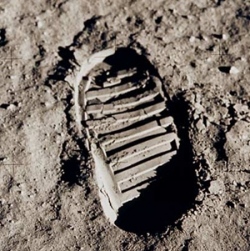
China announces its next manned spaceflight to be launched next summer. What are the implications for ‘senior space powers’? On February 21, Chinese space officials announced that the next manned Shenzhou-9 spacecraft will be launched between June and August this year. Its main task will be to dock with the orbiting Tiangong-1 space lab module, launched in September 2011.
The docking mission will be performed manually, so that the docking technology can be checked. Then, the crew will board the station to live and conduct scientific experiments.
While European space powers are constantly discussing the viability of space stations, their Chinese colleagues are persistently treading the path once taken by the USSR and the USA: from rocket launchers and satellites to first citizen in space and, possibly, to first citizens on the Moon.
Even though the plan apparently takes more time than expected (for example, in 2002 Chinese officials announced Chinese lunar base to be ready in 2010), it is still rather rapid, since the first manned Shenzhou-5 was launched in 2003.
One may argue that Chinese engineers and scientists have had a good start with the help of earlier developed technologies that were not available to ‘senior space powers’. The Chinese do admit that their current achievements repeat earlier space programs of the USSR and the USA.
In the long run, however, it is not the one who has started earlier that wins. Current plans of both space powers lack clear aims, although there are constant attempts to establish a long-term goal. On the other hand, China seems to be well-focused on the task to deliver its citizen to the Moon what will come next is probably less clear, but the answer may eventually come).
Chinese space program, in comparison with American or European, has never been announced widely, so that there has never been any direct competition. Rather, both of the powers go their ways, although to a large extent parallel to each other. However, while senior members of the ‘space club’ get more inclined towards cooperation, China, it seems, prefers self-sufficiency with some elements of joint projects.
Chinese unmanned missions are not that extensive, but there already were successful Chang’e 1 and Chang’e 2 lunar spacecraft, also the part of Chinese Lunar Exploration Program. Chang’e 3, the first Chinese lunar rover, is planned for start in 2013.
